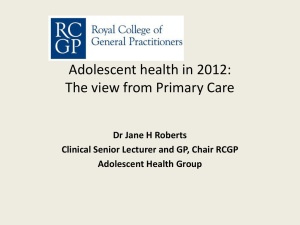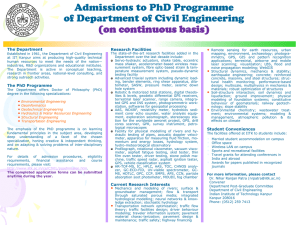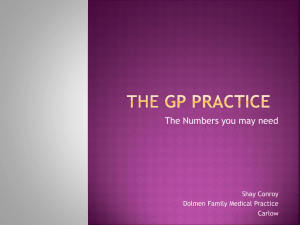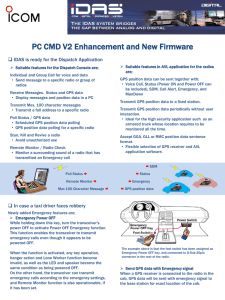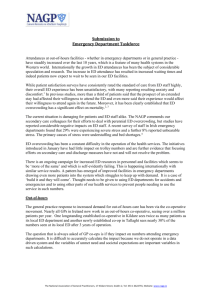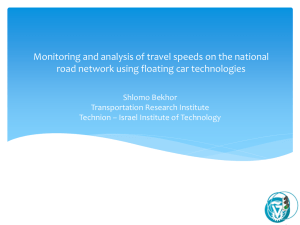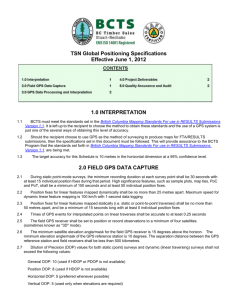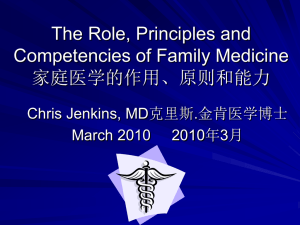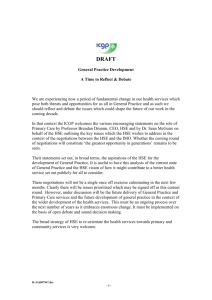General Practice in Ireland 2013- from the perspective of
advertisement
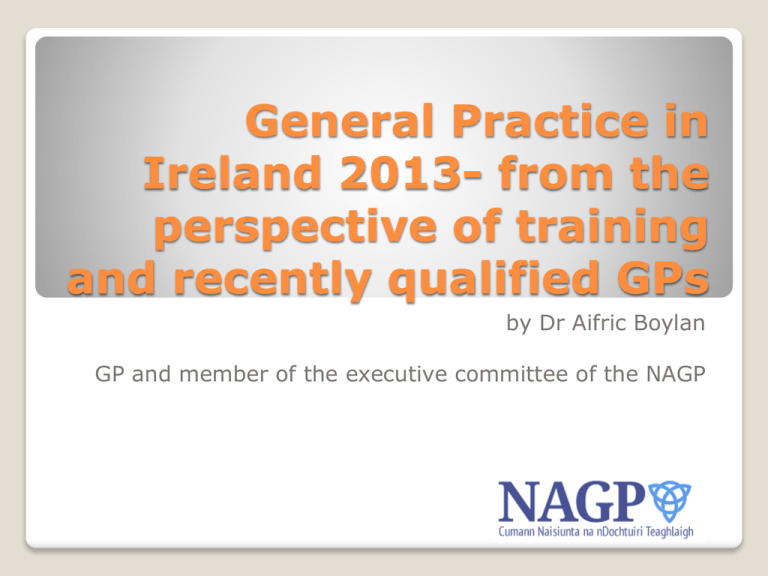
General Practice in Ireland 2013- from the perspective of training and recently qualified GPs by Dr Aifric Boylan GP and member of the executive committee of the NAGP primary care represents best value for the state and the taxpayer Solution to the health service budget crisis High quality accessible care local to patient and at fraction of cost of hospital treatment Requires well trained, properly distributed workforce of GPs At present approximately 160 GPs complete training schemes nationwide per year However...... Pre-existing Shortfalls Low number of GPs per capita, one of the lowest in the OECD, with approximately two thirds the numbers of GP per capita as compared with most European countries in 2007. Research by the ESRI in 2008,2009 “a profound and worsening problem of distribution of GPs across the country”. An ICGP Manpower study of just over 1000 GPs in 2008 showed that 50% of respondents expected to retire by 2020. Furthermore, 27% of those doctors had closed their lists to new patients as they were overloaded with work, and that was before the economic collapse Approximately 47% of Irish trained doctors do not work in Ireland, which is higher than all countries in the OECD. Nearest country to us is Luxembourg at 17% UK only 6% A survey in 2012 showed that 66% of final medical students did not intend to work in Irish hospitals once their intern year was complete Survey November 2013 Mailing lists of training schemes , NAGP mailing list and distributed via other forums. 297 respondents over 1 week 18.5% definitely will or already have emigrated, or plan career change Almost 24% possibly emigrate 7% don’t know Definite loss to system of around 18%, but up to 40% if some or all of the “possibly emigrate” group subsequently decide to leave. Plan to possibly emigrate is highest amongst trainees at 49% possibly, 12% definitely) < 2 yrs qualified : 12% possible , 19% definite 2-5 years qualified: 20% possible, 5.7% definite 5-10 years qualified:11% possible, 4.3% definite 13% of GPs who are already established as partners or principals stated they would possibly emigrate Almost 5% of established partners/principals definitely intend to emigrate Major sources of stress 1: feeling undervalued by the state -68% strongly agreed 2: feeling unfairly targeted by media- 59% strongly agreed 3:Difficulties accessing hospital/tertiary care for patients 50% strongly agreed Followed by feeling overworked, feeling underpaid, inadequate facilities, and negative effect on social and family life Only 14% reported stress from feeling they’d made wrong career choice So who are we losing? Summary We are at present likely to lose at least 18% of our high quality, newly qualified GPs, at a time when we need these particular doctors more than ever (ageing population, ageing GP population, and economic imperative to divert care from hospital setting) without them primary care cannot function. There needs to be investment in the specialty of general practice , and primary care at large, as well as proper incentives for doctors to work in rural or more needy areas. Morale is a massive issue GPs want to be GPs, but we need support from the state Action needed NOW! We don’t need more studies! Priority of NAGP to focus on this issue,and bring it to HSE , politicians, media .



